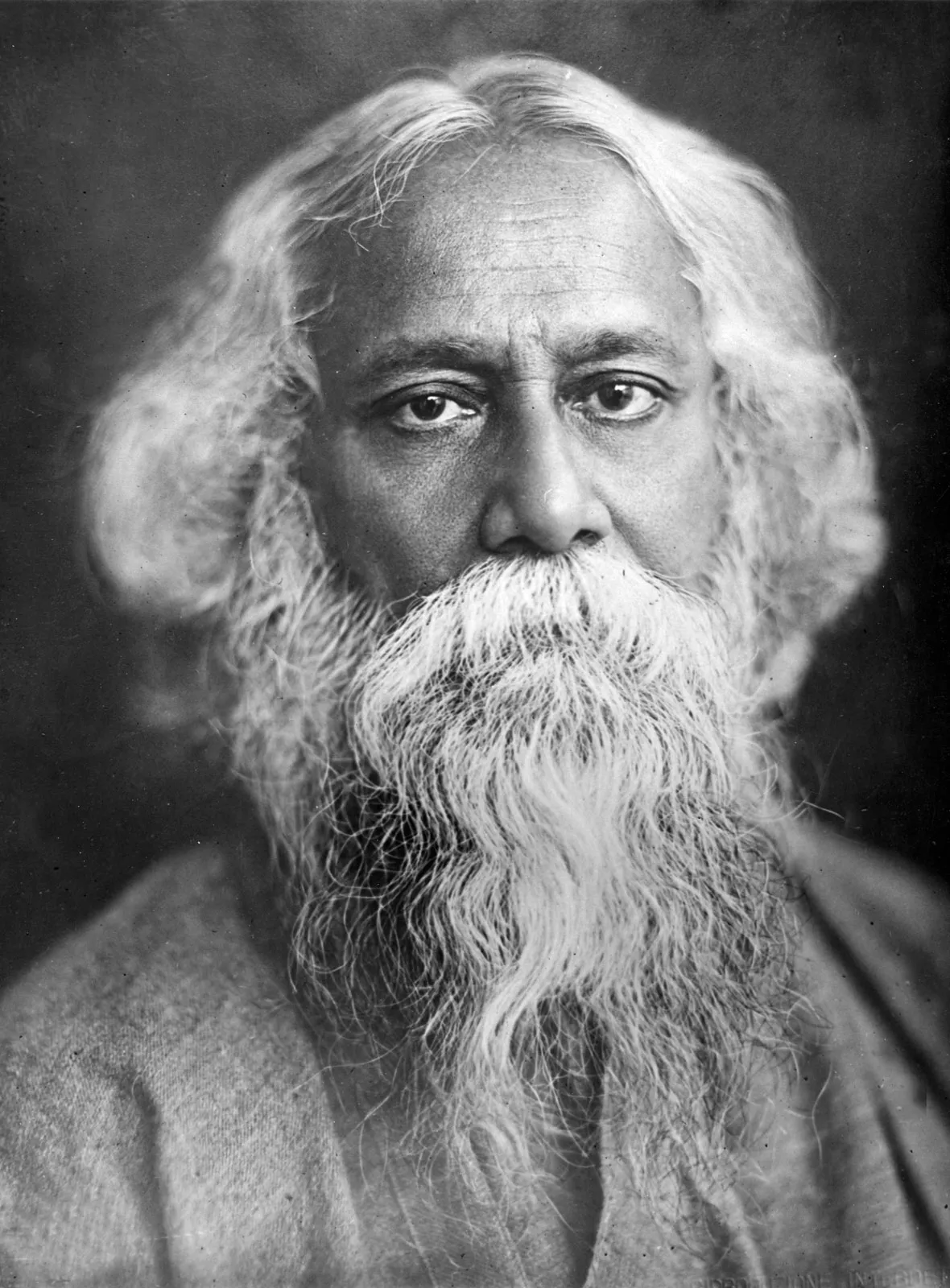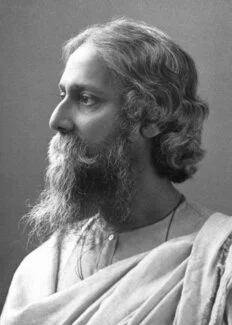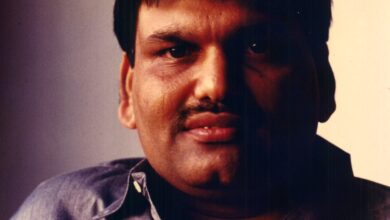Rabindranath Tagore Biography, Wikipedia, Career, Personal Life, Family, Net Worth, Death
Rabindranath Tagore (May 7, 1861 – August 7, 1941) was a renowned Bengali poet, playwright, and philosopher. He became the first Asian to win the Nobel Prize in Literature in 1913 for his poetry collection Gitanjali.
Profile
| Field | Details |
|---|---|
| Full Name | Rabindranath Tagore |
| Date of Birth | May 7, 1861 |
| Date of Death | August 7, 1941 |
| Place of Birth | Calcutta, British India (now Kolkata, India) |
| Profession | Poet, Playwright, Philosopher, Essayist, Musician, Educator |
| Famous Work | Gitanjali |
| Nobel Prize | Nobel Prize in Literature (1913) – First Asian recipient |
| Languages Written In | Bengali, English |
| Major Contributions | Modernizing Bengali literature, composing India’s national anthem |
| Legacy | Founded Visva-Bharati University; inspired global literature and philosophy |
Early Life
Rabindranath Tagore, born on May 7, 1861, in Kolkata (then Calcutta), India, was a polymath who reshaped Bengali literature and music, as well as Indian art, with his contextual modernism. He was the youngest of thirteen surviving children in the affluent and culturally rich Tagore family. His father, Debendranath Tagore, was a leader of the Brahmo Samaj, a reformist Hindu movement, and his mother, Sarada Devi, managed the household. Growing up in Jorasanko Thakur Bari, the Tagore family home, Rabindranath was immersed in an environment of intellectual and artistic pursuits, with his siblings excelling in literature, music, and theater.
Tagore’s formal education was irregular. He attended several schools, including the Calcutta Training School and St. Xavier’s School, but found conventional education stifling. At age eleven, he accompanied his father on a tour of India, which exposed him to diverse cultures and landscapes, shaping his worldview. In 1878, at seventeen, he was sent to England to study law at University College London, but he left without a degree, instead pursuing literature and music independently.

Rabindranath Tagore Career
Tagore began writing poetry at a young age, publishing his first collection, Kabi Kahini (The Tale of the Poet), in 1878 under the pseudonym Bhanusimha. His literary output was prodigious, spanning poetry, novels, short stories, plays, essays, and songs. His early works, such as the poetry collection Manasi (1890), established him as a leading voice in Bengali literature. His novel Gora (1910) explored themes of identity and nationalism, while Gitanjali (Song Offerings), published in 1910, brought him international acclaim.
In 1913, Tagore became the first non-European to win the Nobel Prize in Literature, recognized for Gitanjali’s “profoundly sensitive, fresh, and beautiful verse.” The award elevated his global stature, and he traveled extensively, lecturing in Europe, the Americas, and Asia, advocating for universal humanism and cultural exchange.
Tagore was also a composer, creating over 2,200 songs, collectively known as Rabindra Sangeet, which remain integral to Bengali culture. His compositions, blending classical, folk, and Western influences, include India’s national anthem, Jana Gana Mana, and Bangladesh’s Amar Shonar Bangla.
Beyond literature and music, Tagore was an educator and social reformer. In 1901, he founded an experimental school in Santiniketan, West Bengal, which evolved into Visva-Bharati University in 1921. The institution emphasized holistic education, blending Indian and Western traditions. Tagore also engaged in rural reconstruction, establishing cooperatives and promoting self-reliance in villages like Sriniketan.
His later years saw him critique nationalism and imperialism, notably in his essays and lectures, such as Nationalism (1917). He renounced his knighthood in 1919 to protest the Jallianwala Bagh massacre, reflecting his commitment to justice.
Rabindranath Tagore Personal Life
Tagore married Mrinalini Devi in 1883, when he was 22 and she was 10, a common practice at the time. They had five children: Madhurilata, Rathindranath, Renuka, Meera, and Shamindranath. Mrinalini managed the household and supported Tagore’s endeavors until her death in 1902. Tagore never remarried, and the loss deeply affected him, influencing works like Chokher Bali (1903).
Tagore’s personal life was marked by introspection and a deep connection to nature, reflected in his poetry and paintings. He began painting in his sixties, producing over 3,000 artworks, characterized by bold, modernist styles. His relationships with figures like Victoria Ocampo, an Argentine writer, and his friendships with intellectuals like W.B. Yeats and Albert Einstein, enriched his global perspective.
Rabindranath Tagore Family
The Tagore family was a cornerstone of Bengal’s cultural and intellectual life. His father, Debendranath, was a philosopher and religious reformer. His elder brother, Dwijendranath, was a poet and philosopher, while another brother, Satyendranath, was the first Indian to join the Indian Civil Service. His sister, Swarnakumari Devi, was a novelist. Rabindranath’s children, particularly Rathindranath, played roles in managing Visva-Bharati, though several faced personal tragedies, with Renuka and Shamindranath dying young.

Rabindranath Tagore Net Worth
It is difficult to determine Rabindranath Tagore’s net worth, as he was not primarily focused on accumulating material wealth. Tagore was a literary and philosophical figure whose life was dedicated to creativity, education, and social reform rather than financial gain. Much of his work, including poetry, songs, plays, and essays, was driven by a passion for cultural enrichment and national identity, not commercial success.
Rabindranath Tagore Death
Tagore’s health declined in the late 1930s due to prostate issues and other ailments. He continued writing and painting until his final days, producing works like Janmadin (Birthday) in 1940. On August 7, 1941, he died in Kolkata at age 80, following complications from surgery. His death was mourned globally, and his legacy endures through his works, Visva-Bharati, and cultural institutions like the Rabindra Bharati University.
READ ALSO: Leslie Norris Biography, Wikipedia, Career, Personal Life, Family, Net Worth, Death
FAQs
What is Rabindranath Tagore best known for?
Tagore is best known for winning the Nobel Prize in Literature in 1913 for Gitanjali, composing Rabindra Sangeet, and founding Visva-Bharati University. He also wrote India’s and Bangladesh’s national anthems.
Why did Tagore renounce his knighthood?
Tagore renounced his knighthood in 1919 to protest the Jallianwala Bagh massacre, where British forces killed hundreds of unarmed Indians in Amritsar.
What is Visva-Bharati University?
Visva-Bharati, founded by Tagore in 1921 in Santiniketan, is a university promoting holistic education, blending Indian and global traditions. It remains a cultural and academic hub.
How did Tagore contribute to Indian nationalism?
Tagore supported India’s freedom struggle but critiqued aggressive nationalism. His works, like Gora, explored identity, and his renunciation of knighthood was a bold anti-colonial act.
Did Tagore paint as well as write?
Yes, Tagore began painting in his sixties, creating over 3,000 modernist artworks, exhibited globally, showcasing his versatility.
What is Rabindra Sangeet?
Rabindra Sangeet refers to Tagore’s collection of over 2,200 songs, blending classical, folk, and Western styles, central to Bengali cultural identity.
How did Tagore’s family influence his work?
The Tagore family’s intellectual and artistic environment nurtured Rabindranath’s talents. His siblings and father were accomplished in literature, philosophy, and reform, shaping his worldview.
Where can I read Tagore’s works?
Tagore’s works, like Gitanjali, The Home and the World, and Selected Poems, are available in bookstores, libraries, and online platforms like Project Gutenberg for public-domain texts.





